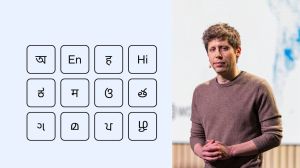Thanks to MNES, world’s firt solar crematorium can still be operational
VADODARA, JULY 21: The clouds keeping the world's first solar crematorium from becoming operational are monetary. However, the silver lini...

VADODARA, JULY 21: The clouds keeping the world’s first solar crematorium from becoming operational are monetary. However, the silver lining is that the Ministry of Non-conventional Energy Sources (MNES) has agreed to fund the project.
The project ran into rough weather because of the skyrocketing cost of the solar concentrator that would reflect the sun’s rays on a specially-constructed coffin, and the last-minute doubts over whether one concentrator would be enough to burn a body completely.
The project was planned by Teethal’s Satya Sai Baba Trust (SST) at Valsad, in South Gujarat, about two years ago. Vadodara-based Himalaya Machineries had undertaken construction of the 50-sq-metre glass concentrator.
Wolfgang Scheffler, who is involved in world-wide promotion of solar energy, visits Vadodara to oversee the erection of the novel project. Deepak Gadhia of Valsad-based Gadhia Solar Energy Systems Private Limited, who was approached by SST with the idea, told The Indian Express that MNES officials had visited Valsad on his invitation and were positive about funding the project.
When Raman Panwala of SST approached Gadhia, who is also solar energy promoter, with the question “Is it possible to use the sun’s energy to burn a dead body?” he was taken aback. Scheffler convinced him it was possible.
Sources in Himalaya Machinery said, “They had miscalculated the cost and were ready to spend about Rs 5 lakh only.” But one concentrator alone cost about Rs 10 lakh.
“They developed cold feet when we confronted them with the actual costs,” sources said, adding, “It is not binding on us to supply the concentrator only to SST. Whoever is ready to buy can do so. Only they should be backed by persons who know the technology.” Panwala said Vadodara was the other place in Gujarat where they could sell the dish.
Gadhia, however, said money was not a problem. “We thought 18 KW heat generated from one concentrator may not be sufficient to burn four to five bodies. We want to manufacture another solar dish and double the heat capacity,” he explained.
Ronnie Sabawalla of Himalaya Machinery and Gadhia said it would not take long to manufacture another dish. “We don’t want to risk a failed technology in such a sensitive issue, and want to make doubly sure its efficacy,” Gadhia admitted.
Panwala and Gadhia claimed money was not a problem as many donors had shown willingness long ago. “We won’t be able to face donors if the technology did not work,” Panwala said, adding, “We will approach donors only after we can show that the project is successful.”
The only way out was to involve MNES which spends a lot of money on research and development on renewable energy sources, Gadhia said. He said the Ministry had shown a willingness to support the project. The Ministry’s support would not only save the project but also create a possibility for taking the idea to places.
The moment the Ministry’s nod comes, the order for the second dish would be placed. Construction of an iron coffin is not a big deal and would not take long, according to Gadhia. Panwala is hopeful of having the crematorium in place by Diwali. Gadhia said it might take a little longer.





- 01
- 02
- 03
- 04
- 05


























